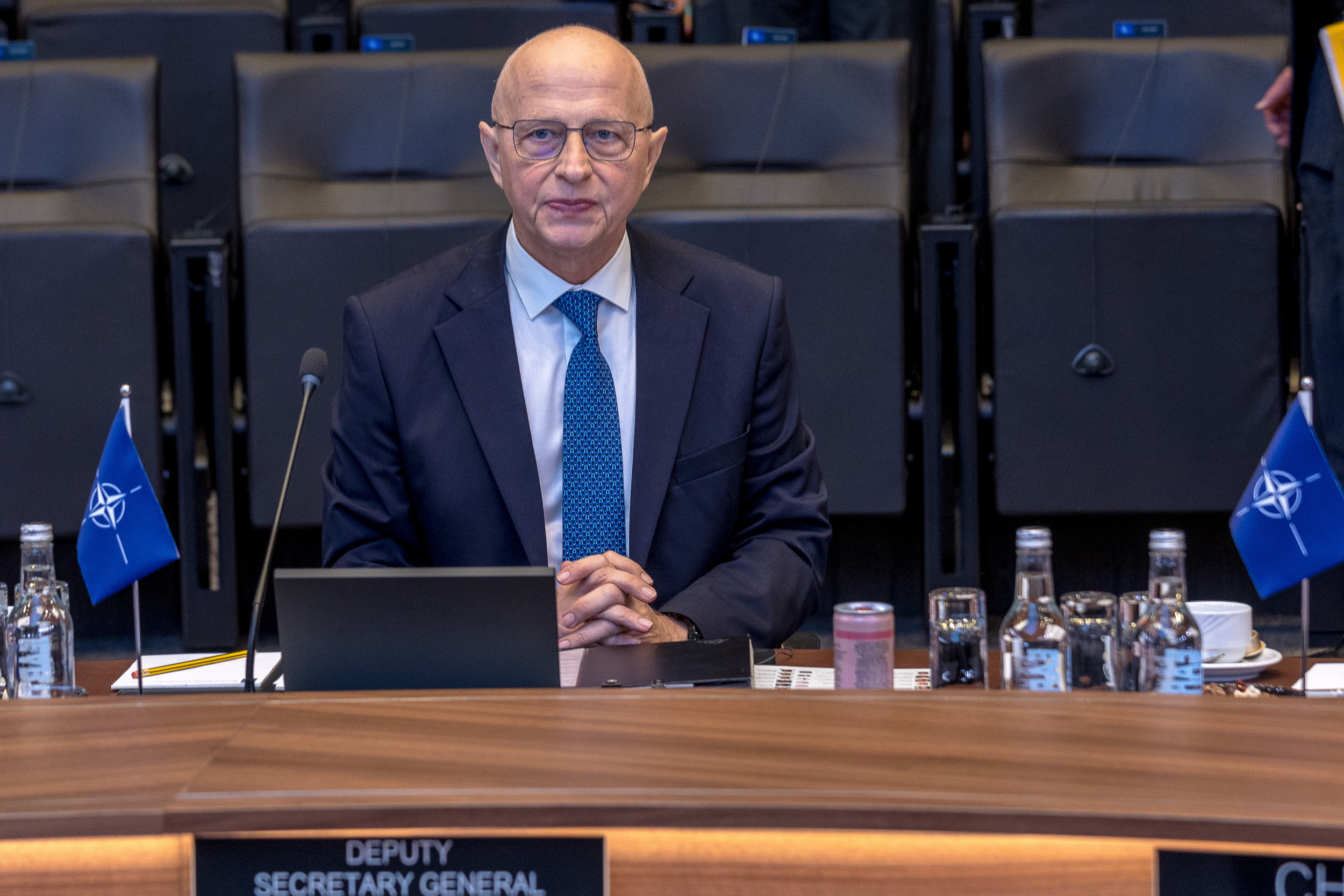A handful of NATO members took further steps Wednesday in developing the European Sky Shield Initiative, roughly one year after the air and missile defense system was introduced.
The initiative, led by Germany, intends to bolster Europe’s air defense capabilities in light of Russia’s invasion of Ukraine. Defense ministers from 10 NATO countries signed a memorandum of understanding Wednesday to further develop the Sky Shield, according to a press release.
“European Sky Shield Initiative, under Germany’s leadership, shows the value of Allies stepping up to meet NATO’s requirements, while ensuring interoperability and integration,” NATO Deputy Secretary General Mircea Geoană said in the release. “This initiative therefore, helps translate Allied commitments on defense spending into tangible capabilities available for our collective defense. It demonstrates the clear commitment of European Allies to fair burden sharing as well.”
The countries that signed the memorandum include Belgium, the Czech Republic, Denmark, Estonia, Germany, Hungary, Latvia, Lithuania, the Netherlands and Slovenia, per NATO’s release. Five NATO countries that signed a letter of intent for the development of the initiative last year—Bulgaria, Finland, Slovakia, Romania and the United Kingdom—did not sign Wednesday’s agreement.
When reached for comment, NATO’s press office directed Newsweek to a statement made by Secretary General Jens Stoltenberg earlier this year, who said that while each country a part of the Sky Shield initiative will make a decision on what systems their defense teams want to invest in, all allies agree that investing in air defense is a priority.
“The war in Ukraine has demonstrated how important it is to have modern multi-layered air defense systems,” Stoltenberg said during a press conference in January. “What matters for NATO, as pointed out, is that allies invest quite different capabilities, but also that, when we do that, we ensure that this is fully interoperable with other NATO countries, because we need to work together.”
NATO allies in eastern Europe have been on high alert since Russia’s full-scale invasion of Ukraine in February 2022. Last month, Reuters reported that Romania was working to fortify its villages along the Danube River, which sits just across the border from Ukrainian grain facilities subjected to ceaseless Russian drone attacks. The measures included the deployment of four additional U.S. F-16 fighter jets and an expanded no-fly zone.
Estonia and Latvia, which share a border with Russia, also signed a joint purchase on September 11 for a $1.1 billion German medium-range air defense missile system, reported the Associated Press (AP). And Lithuania announced on September 29 that it plans to build a barrier along its border with Russia and Russia’s close ally, Belarus.
The Russian Ministry of Defense recently showed signs of preparing for a standoff with Finland, the newest member of NATO, and the Baltic States by transferring four constituent regions in northwestern Russia to the Leningrad Military District. The Institute for the Study of War previously assessed that the decision indicates that Moscow sees a need to restructure its forces closest to its Finnish border.
Former Russian President Dmitry Medvedev has also recently declared that Moscow appears to be ready to engage in “direct conflict with NATO.”
Update 10/12/23 10:33 a.m. ET: This story has been updated with additional information from NATO’s press office.

